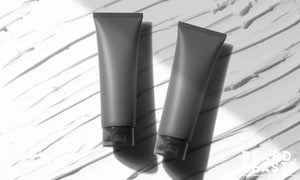Why Is Beard Hair So Rough? Science & Expert Care Guide
A rough, wiry beard can feel impossible to tame. If you’ve wondered why beard hair is so rough, you’re not alone—and the answer goes far beyond simple luck.
Facial hair is built differently from the hair on your head, shaped by dense keratin, hormone-driven growth, and daily stress that can magnify coarseness. The good news: with the right grooming strategy, you can soften each strand without sacrificing strength.
This guide explains the science behind beard texture, shows the external factors that make it worse, and gives you a step-by-step routine to keep your beard strong, smooth, and unmistakably well-groomed.

Why Is Beard Hair So Rough? Understanding Its Structure
Beard hair isn’t built like the hair on your head. Each strand grows from a larger, oval-shaped follicle that produces a thicker, more irregular shaft, giving facial hair its natural stiffness and rugged feel.
At the core of every strand is keratin—a tough structural protein. In beard hair the keratin bundles are densely packed, creating a rope-like strength that resists bending and makes each hair feel noticeably coarser.
Hormones add to this texture. Testosterone and its derivative DHT stimulate these larger follicles, driving rapid growth and producing stronger, wirier strands than those found on the scalp.
Facial hair also moves through a shorter growth cycle. Because the active growth phase is brief, the tips remain sharper and less naturally worn down, so the ends feel rough against your skin.
Finally, natural oils don’t always keep up. Sebaceous glands supply sebum to protect the hair shaft, but a full beard can outgrow that supply, leaving the outer cuticle dry and slightly lifted—another reason the beard feels coarse to the touch.
External Factors That Make Beard Hair Even Rougher
Your beard’s natural structure gives it strength, but daily habits and environmental stress can magnify that coarse feel. Understanding these factors helps you prevent unnecessary roughness and protect the work you put into grooming.

Dryness and Dehydration
Low humidity, indoor heating, or simply skipping hydration leave both skin and hair short on moisture. A dry cuticle lifts and frays, so each strand catches on the next, creating a stiff, scratchy texture you notice every time you run a hand through your beard.
Split Ends and Breakage
Constant friction from collars, scarves, or even frequent combing weakens the ends of each hair. When a strand splits, it develops sharp edges that snag and feel prickly. Trimming every few weeks keeps tips blunt and reduces this abrasive effect.
Environmental Stress
Sun exposure oxidizes the outer cuticle, while cold winds and hard water strip away natural oils. Chlorine from pools and urban pollution add another layer of damage. Over time, these factors roughen the hair shaft and dull its natural sheen.
Improper Grooming Habits
Harsh shampoos or daily hot-water washes remove sebum—the natural oil that softens and protects. Rubbing your beard dry with a towel or using high-heat blow-dryers further lifts the cuticle. Gentle cleansing and pat-drying preserve the oils that keep strands smooth.
Recognizing these external stressors puts the control back in your hands. When you limit dryness, guard against the elements, and adopt gentler grooming habits, you stop the forces that magnify natural coarseness—so every softening step in your routine works to its full potential.
Step-by-Step Grooming Strategy to Soften Beard Hair
A coarse beard can be transformed when you commit to a disciplined routine. Each step below explains why it matters, how to do it, and the expert details that make the difference.

1. Cleanse With a Beard-Specific Wash
Start with a sulfate-free beard wash two to three times a week. Regular facial cleansers or scalp shampoos are too harsh—they strip sebum and dry the cuticle.
Use lukewarm water and massage the wash into the roots with your fingertips to lift sweat, excess oil, and debris without rough friction.
2. Deep-Condition for Lasting Hydration
Follow every wash with a beard conditioner or a weekly deep-hydrating mask. Conditioners rich in shea butter, argan oil, or aloe help flatten the cuticle and trap moisture inside each strand.
Work the product through from skin to tip, leave it in for two to five minutes, then rinse thoroughly to avoid buildup.
3. Apply a High-Grade Beard Oil Daily
A quality beard oil mimics the sebum your skin produces, preventing dryness and breakage. After towel-drying (pat, don’t rub), warm three to five drops in your palms and massage from the skin outward.
Focus on the base of each follicle to nourish new growth while smoothing existing hair.
4. Seal and Shape With Beard Balm or Butter
For thicker or longer beards, finish with a light layer of beard balm or beard butter. The beeswax or natural butters create a soft seal that locks in the oil’s moisture while offering light hold.
Work a pea-sized amount through the beard and use a beard brush to distribute evenly and train the hair to lie in your desired direction.
5. Trim With Purpose
Beard split ends and uneven growth are prime causes of rough texture. Trim every two to three weeks using sharp beard scissors or a guarded trimmer.
Focus on the outer line and any visibly frayed tips—short, clean cuts keep the ends blunt and prevent snagging.
6. Maintain Daily Hydration and Night Care
Softening isn’t just about products. Drink enough water to support follicle health and consider a quick nightly routine: a few drops of beard oil before bed and a silk or satin pillowcase to reduce friction while you sleep.
This routine is more than maintenance—it’s a strategy. By cleansing without stripping, conditioning deeply, sealing moisture, and trimming precisely, you give each strand the hydration and protection it needs to feel strong, look sharp, and stay touchably soft every day.
Need faster fixes or product-specific advice? Check out our guide Rough Beard? How to Fix It & Get a Soft Beard for quick solutions you can use today.
Additional Tactics for Lasting Softness
Daily grooming sets the foundation, but small lifestyle choices keep your beard softer for the long haul. These extra steps strengthen each strand from the inside out and protect the work you put into your routine.

Optimize Your Diet
Strong, supple hair starts with nutrients. Include protein-rich foods, omega-3 fatty acids, and vitamins A, C, D, and E to support keratin production and natural oil balance.
Lean meats, fish, eggs, nuts, and leafy greens deliver the building blocks your follicles need. A steady supply of these nutrients reduces brittleness and helps your beard retain moisture.
Stay Consistently Hydrated
Water keeps the hair shaft flexible and the skin beneath it healthy. Aim for steady hydration throughout the day rather than occasional large intakes.
When your body is well hydrated, the cuticle stays smoother and less prone to the microscopic lifting that causes a coarse feel.
Protect Against Heat and Sun
Excessive heat from blow-dryers or direct sunlight dehydrates the hair cuticle. UV exposure also breaks down proteins in the shaft, leaving it dull and rough.
If you spend time outdoors, apply a light beard oil with natural UV filters or wear a hat to shield the lower face. Limit blow-drying to low or medium heat and always keep the nozzle moving.
Avoid Harsh Water and Chemicals
Hard water leaves mineral deposits that roughen the cuticle and dull natural shine. Chlorine from pools has a similar drying effect.
If hard water is common where you live, consider a shower filter to reduce mineral buildup. Rinse your beard with fresh water after swimming to remove chlorine before it dries out the hair.
These habits reinforce the results of your core grooming routine. By feeding your body well, keeping it hydrated, and protecting your beard from heat, sun, and harsh water, you preserve softness and strength day after day.
Final Thoughts
You came here wondering why beard hair is so rough, and now you know it’s a mix of dense keratin, hormone-driven growth, and outside stress. With the right grooming routine, you can soften that natural coarseness and keep your beard strong.
Address dryness, split ends, and daily environmental factors to maintain a healthy, manageable texture. Follow the step-by-step care strategy and your beard will stay powerful, refined, and touchably soft.
For more expert advice, explore our other grooming guides to sharpen every part of your beard-care routine.




